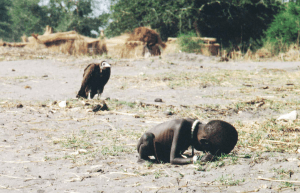This weeks text Photographs as Activism by Michelle Bogre was very helpful in terms of using it for other work, the text discusses the meaning and purpose of documentary which is to educate/teach aswell as inform. Bogre tells us in the text that “What I see makes me angry, and I want to maintain that anger because the photograph itself is not the end. It is only the first step in the process to inforce change.” This tells us that not only in documentary photography do we learn about current affairs but we also learn about why they are problematic. Bogre’s approach to this is very apparent and she makes it very clear that just because and event has been noticed does not mean that it is the end of the issue. In contrast Michelle goes on to tell us that it is simply the starting point to creating change whether that be in terms of creating equal rights or supporting poorer countries. Overall Bogre creates an outstanding look at how we approach photography in terms of documentary, it is supposed
to be informative as well as to teach and educate. Not only this but it is also a very helpful tool in terms of activism. Because it is truthful, what you see is real. For example Kevin Carter’s “Vulture and Child” a very powerful image that can be used as a form of activism to enforce change. The photograph is a good example of a simple starting point, people realise the truth and then go on to create change accordingly.
